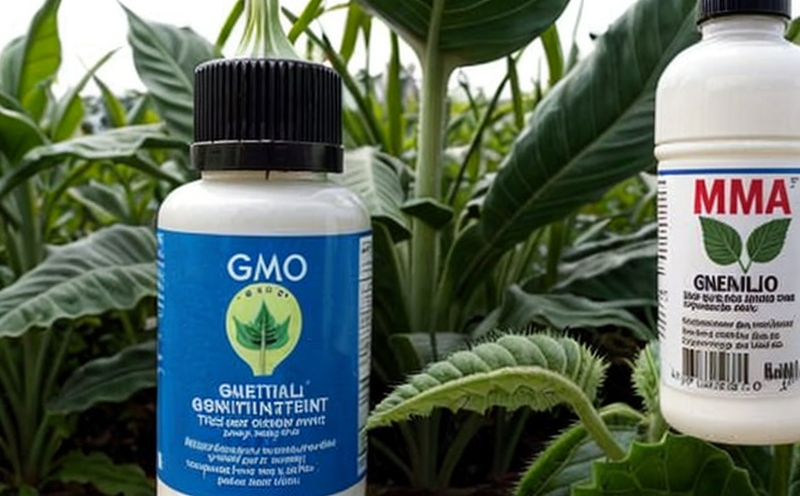ISO 24334 GMO Quantification in Rice Products
The ISO 24334 standard provides a robust framework for quantifying genetically modified organisms (GMOs) in rice products. This service is essential for ensuring compliance with regulatory requirements and maintaining consumer trust. The process involves several critical steps, from sample preparation to final analysis, which are governed by international standards.
The first step in this procedure is the sampling of rice samples. Proper sampling ensures that the test results accurately reflect the GMO content within a given batch or lot. This requires adherence to strict protocols outlined in ISO 24334, which may include guidelines for sample size and homogeneity. Once collected, these samples undergo preliminary processing steps such as milling if necessary before being sent for analysis.
After preparation, the samples are analyzed using advanced molecular techniques like polymerase chain reaction (PCR) or next-generation sequencing (NGS). These methods provide precise quantification of specific GMO events present in the rice matrix. The results obtained from these analyses must adhere to stringent acceptance criteria specified by ISO 24334.
Compliance with this standard is crucial for food and feed manufacturers who need to demonstrate adherence to local and international regulations regarding GM content disclosure. By quantifying GMOs accurately, companies can ensure they meet legal obligations while also maintaining market integrity and consumer confidence in their products.
The importance of accurate GMO testing cannot be overstated, particularly given the increasing demand for transparency around food origins and production methods worldwide. As global trade continues to evolve, ensuring compliance with standards like ISO 24334 becomes increasingly important for businesses operating across borders.
For quality managers and R&D engineers responsible for developing new products or reformulating existing ones, understanding these nuances is key to staying ahead of regulatory changes and consumer expectations. Additionally, procurement teams can benefit from knowing how rigorous testing processes help safeguard supply chain integrity.
Why Choose This Test
Selecting the ISO 24334 GMO Quantification in Rice Products test offers numerous advantages over less stringent alternatives or outdated methods. First and foremost, it provides a standardized approach that ensures consistency across different laboratories worldwide. This standardization is vital for maintaining accurate results regardless of where samples are tested.
- Regulatory Compliance: By adhering to ISO 24334 guidelines, food producers can ensure their products meet all relevant regulatory requirements. This includes avoiding potential legal issues and fines associated with non-compliance.
- Consumer Trust: Consumers are increasingly demanding transparency about the ingredients in the foods they purchase. Accurate GMO quantification helps build trust by allowing companies to communicate openly about any GM content in their products.
- Market Differentiation: In competitive markets, demonstrating a commitment to responsible sourcing and production can set one company apart from competitors. Providing reliable GMO test results adds value and strengthens brand reputation.
The reliability of ISO 24334 also extends beyond compliance; it supports continuous improvement efforts within organizations. Regular assessments through this standard allow businesses to identify areas for enhancement in their processes, ultimately leading to better product quality and customer satisfaction.
Moreover, choosing this test can reduce operational risks associated with non-compliance or subpar testing practices. It eliminates guesswork by providing clear metrics against which performance can be measured consistently over time.
Competitive Advantage and Market Impact
The adoption of ISO 24334 GMO Quantification in Rice Products not only meets regulatory expectations but also positions companies favorably in competitive markets. In an era where consumers are becoming more informed about food origins and production processes, being able to prove adherence to stringent testing protocols can significantly enhance a brand’s image.
For quality managers and compliance officers, this service ensures that every batch of rice product meets the highest standards, thereby reducing the risk of recalls or lawsuits due to false labeling. This level of assurance strengthens relationships with customers and suppliers alike, fostering long-term loyalty and partnership.
R&D engineers can leverage accurate GMO quantification data when innovating new formulations or optimizing existing ones. Understanding the exact amount of GM content allows for targeted adjustments that align with both regulatory demands and business goals.
From a procurement perspective, sourcing rice products that have been rigorously tested according to ISO 24334 reduces supply chain risks. It guarantees consistency in product quality from multiple suppliers while ensuring compliance with international trade agreements.
The broader implications extend beyond individual companies; as more firms adopt these best practices, it contributes to the overall integrity of the global food industry. This collective effort towards transparency and responsible sourcing supports sustainable development goals and enhances public health outcomes globally.
Use Cases and Application Examples
- Consumer Goods Manufacturers: These companies often face stringent scrutiny regarding GM content in their products. By utilizing ISO 24334, they can confidently declare the absence of unintended GMOs or specify exact levels when present.
- Retailers: Large retail chains frequently require proof of compliance for all items sold under their banners. Accurate GMO quantification helps them maintain high ethical standards and avoid costly disputes with customers.
- Exporters: International trade agreements often stipulate specific limits on GM content in imported goods. Meeting these requirements ensures smooth transactions without delays or additional costs.
- Agricultural Organizations: Groups involved in breeding programs for rice can use this service to monitor the genetic purity of their lines before commercial release.
In addition, this test plays a crucial role during audits by regulatory bodies or third-party certifiers. It provides objective evidence supporting claims made about GM content in marketed products, thus simplifying compliance verification processes.





